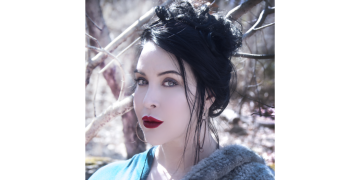A veteran downtown choreographer known for his deft involvement of the audience — the playwright Young Jean Lee once called him “the expert in that field” — Moss builds slowly to the charged interaction of recruiting help, which he got on Thursday night from a very game spectator, who amicably agreed to be wrapped in canvas, dragged around the room and left in the dark. (This ends up looking considerably more comfortable than it sounds.)
Up until that point, Moss has been performing a series of solo tasks. In one of the first, he removes the outer layer of the mysterious mound — the vast canvas in which he later enfolds the audience member — to reveal that there is, in fact, a person underneath.
This canvas expanse, with frayed rope along its edges, becomes a visual and conceptual centerpiece, continuously reconfigured. Spread out on the wooden floor, it’s a surface on which Moss arranges his body, in relaxed and vulnerable postures. Gathered up and bound, it becomes a weight that he balances on his back as he repeatedly circles the room. With his torso curled around it on the ground, it transforms from burden to comfort. At times he goes to great lengths to manipulate the fabric, only to quickly unravel it and shape it into something new.
Early in the work, Moss also unveils a painting, perched on the church’s altar, by the artist Angela Dufresne. Titled “Dean Moss,” it’s a portrait of him, in the same denim pants and shirt he wears onstage, seated with legs outstretched, amid the draping folds of a canvas that also resembles the one in front of us. The painting’s prominent position, overlooking the proceedings, creates the effect of the artist both observing himself and watching us watch. Fashioning another kind of reflection or deflection, he discards a mirrored board on the ground, which, in tandem with Carol Mullins’s sensitive lighting, sets patches of the ceiling gently aglow.
That softness — also emanating from Stephen Vitiello’s luminescent score — seems to exist in a plane parallel to the sounds and images of entrapment and struggle that pervade the work, just one of many tensions and contradictions that make “Your marks and surface” both unsettling and intensely engaging.






















